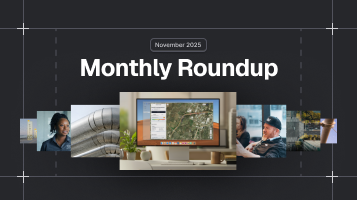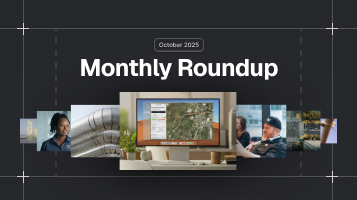Texas Underground Water Maps: Is This Data Enough to Dig with Confidence?
Written by

Published on
August 23, 2022


Table of contents
Whether you plan to dig borewells or lay the foundation of a building, there are chances that underground utility lines lurk underneath. In Texas, much like anywhere else, there is a vast network of infrastructure under the earth that keeps life moving. These include utility lines related to oil and gas, electricity, telecom, water and wastewater.
Digging blindly or with outdated information can damage this infrastructure and have unintended consequences. From costly repairs to penalties, unplanned and haphazard digging can result in undesirable situations. In particular, digging over water and wastewater lines can result in broken pipes, infrastructure damage, and contamination of drinking water. Hence, it is crucial to identify utility lines accurately before beginning to dig.
Most governments and certain private organizations make underground water and wastewater maps available to the public. Underground water and wastewater maps can help to some extent; however, the maps may contain imprecise, incomplete, or out-of-date location data. This article looks at whether Texas underground water maps are enough to dig with confidence.
Who provides retail water and sewer utilities in Texas?
In Texas, retail water and sewer utilities are provided by both private and public entities. The Public Utility Commission (PUC) of Texas issues Certificates of Convenience and Necessity (CCN) to entities which offer water and sewer services to the public. A CCN holder has the exclusive right to provide utility services within an identified boundary.
Many housing complexes, gated communities, and similar residential arrangements are served by private CCN holders. In these areas, municipal and district authorities may not provide utility services. Outside these exclusive areas, municipal and district authorities provide water and sewer facilities. Usually, districts and municipalities are not required to possess a CCN, even though they may provide water and sewer utility services to citizens.
It is important to note that there are CCN areas in which multiple authorities overlap, due to dual certifications. These situations are beneficial to residents and utility customers, because they may have the option to choose the utility service that they prefer. But for engineers and contractors, this makes things complex as it may be difficult to ascertain which CCN holder maintains utility lines under the land in which they plan to dig.
Where to access Texas water and wastewater utility maps?
The PUC's official digital mapping data contains downloadable information related to retail water and sewer utilities. This data includes current boundaries of areas managed by various CCN holders. The PUC of Texas also has a CCN Viewer Tool, which allows property owners and other interested parties to check who provides water and sewer services to a particular property or address. However, these tools have no specific information regarding water or sewer pipes.
In other words, despite being able to access maps related to CCN boundaries, you will not know where exactly the pipes are located under the ground. This makes PUC’s official digital mapping data of limited use to those who plan to dig. They may receive vague information about utility lines from the CCN holder who serves their area, but there will be no accurate information related to underground water and sewer pipelines.
The Texas Water Development Board (TWDB) Groundwater Database (GWDB) contains valuable information about selected water levels, oil and gas tests, wells, and springs. However, these maps do not provide any information about the location of utilities located underground. Nor can this data help provide sufficiently precise and reliable information for excavators. At the same time, water flow maps and stream maps do not include information about utility infrastructure.
You need more than underground water maps to dig with confidence
As you can see, all the sources listed above provide either approximate boundaries or information that is inconvenient or not valuable to use. In addition, you may be unable to find the latest and most accurate information, as public agencies may update underground utility data at a delay, ranging from several months to more than a year.
As a result, finding the exact location of utility lines and other underground infrastructure can be challenging when you set out to dig. Quite simply, the current solutions are not enough to dig with confidence.
How about 811?
Call 811 is a free service that can give you information about where underground utilities are located and which utilities operate around your project site. In Texas and other states, calling 811 is a legal requirement before you start to work on a project that requires digging.
Unfortunately, 811’s data only covers public utilities and may contain inaccuracies or lead to locating errors. It is important to note that many utility lines are undocumented or have been abandoned in place, and they can pose a real threat to projects that involve excavation. These unregistered utility lines may not be identified by 811 locators or may be confused for documented utilities.
Let’s be clear: 811 is an essential service and a legal obligation. But depending on your project needs, you probably need more to plan, design, and dig with confidence, and utility mapping is one option. Utility mapping collects visual evidence to confirm as-built data in conjunction with remote sensing of field conditions from satellite evidence. It also identifies unregistered and abandoned utility lines so that you have a clear understanding of the subsurface landscape beneath the land where you plan to dig.
Choose an AI-enabled utility mapping solution
Thanks to artificial intelligence, remote sensing and advanced map technologies, you can now get an accurate picture of the subsurface region in which you plan to dig in Texas. AI-enabled utility mapping solutions help you look under the surface where you plan to dig, whether on the job site or from the office. Platforms like 4Map are helpful to gain early knowledge of buried utilities such as wastewater, water, natural gas, oil and steam pipelines that could be inadvertently damaged while digging.
We produce maps that are both accurate and up-to-date, helping you dig with confidence during all stages of your construction project. In other words, not only will you be able to locate water and sewer pipelines clearly, but you will also be able to detect other pertinent infrastructure underneath. This will avoid unnecessary repair expenses and penalties you may have to pay if you damage underground pipes inadvertently.
Recent blog posts

Our Newsletter
Join 7k infrastructure professionals
Get monthly insights on ways to build smarter, faster and safer with Utility AI.

.avif)




